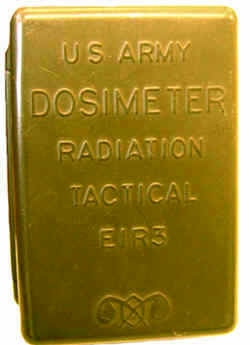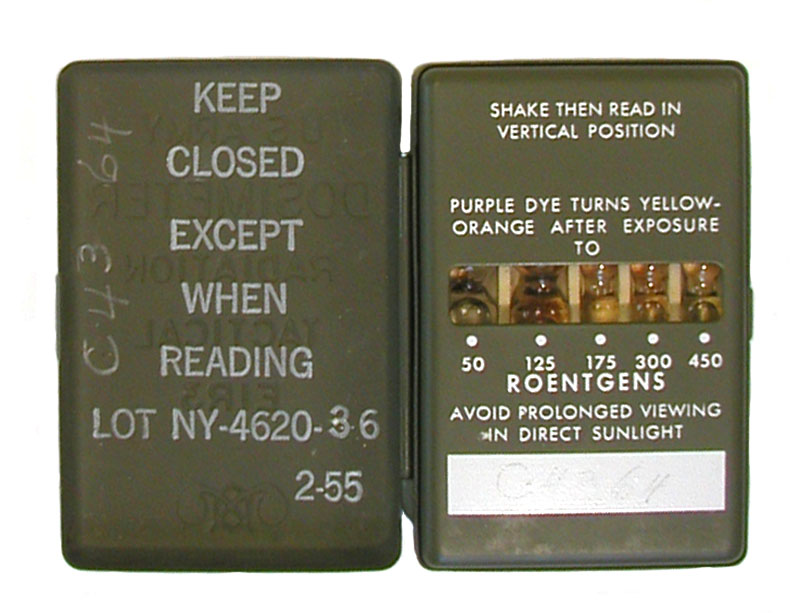EIR3 Army Chemical Dosimeter (1950s)
This army chemical dosimeter is housed in a 2.25” x 3.25” x 0.7” olive-green metal case. The cover is stamped “US Army, Dosimeter, Radiation Tactical EIR3” while the inside of the cover reads “Keep closed except when reading, Lot NY-4620-36 2-55.” The "55" probably refers to a production date of 1955. The bottom half of the unit contains five solution-filled glass vials that are partially visible through a horizontal window. The two vials on the left are approximately 3/8" in diameter while the three on the right are approximately 1/4" in diameter.
The instructions above the window read “Shake then read in vertical position. Purple dye turns yellow-orange after exposure to” Below the window is the following: “50, 125, 175, 300, 450 Roentgens. Avoid prolonged viewing in direct sunlight.”


According to Morgan, this type dosimeter was developed by G. Taplin, C. Douglas, and B. Sanchezet and described in “A Sensitive Colorimetric Method for Radiation Dosimetry” (UCLA-118). The solution consists of alcohol-free chloroform and the dye brome-creosol purple. When the chloroform absorbs radiation energy, hydrochloric acid is produced which changes the dye color from purple to yellow. Sodium hydroxide is added to adjust the sensitivity.
Learn more about a non-military version of this dosimeter produced by Technical Associates.
A 1955 AP press release, apparently describing this dosimeter, read as follows: "an inexpensive radiation detector no bigger than a package of king-size cigarets [sic] has been developed by Army scientists. The Army Chemical Corps Material Command, which has headquarters here [Baltimore], said the device, called a tactical radiation dosimeter, can measure accurately the amount of deadly radiation the individual has absorbed. Unlike its existing counterpart, a film badge, the dosimeter can be used repeatedly and doesn't need processing to show the presence of radioactivity—liquids in five glass tubes change color to show the signs of danger."
The purpose of the dosimeter was probably to predict the fighting capability of troops that were entering an area where a tactical nuclear weapon had been deployed.
References
- Z. Morgan, unpublished manuscript, 1951.
- AP Press Release in the Syracuse Herald Journal, March 12, 1955.
